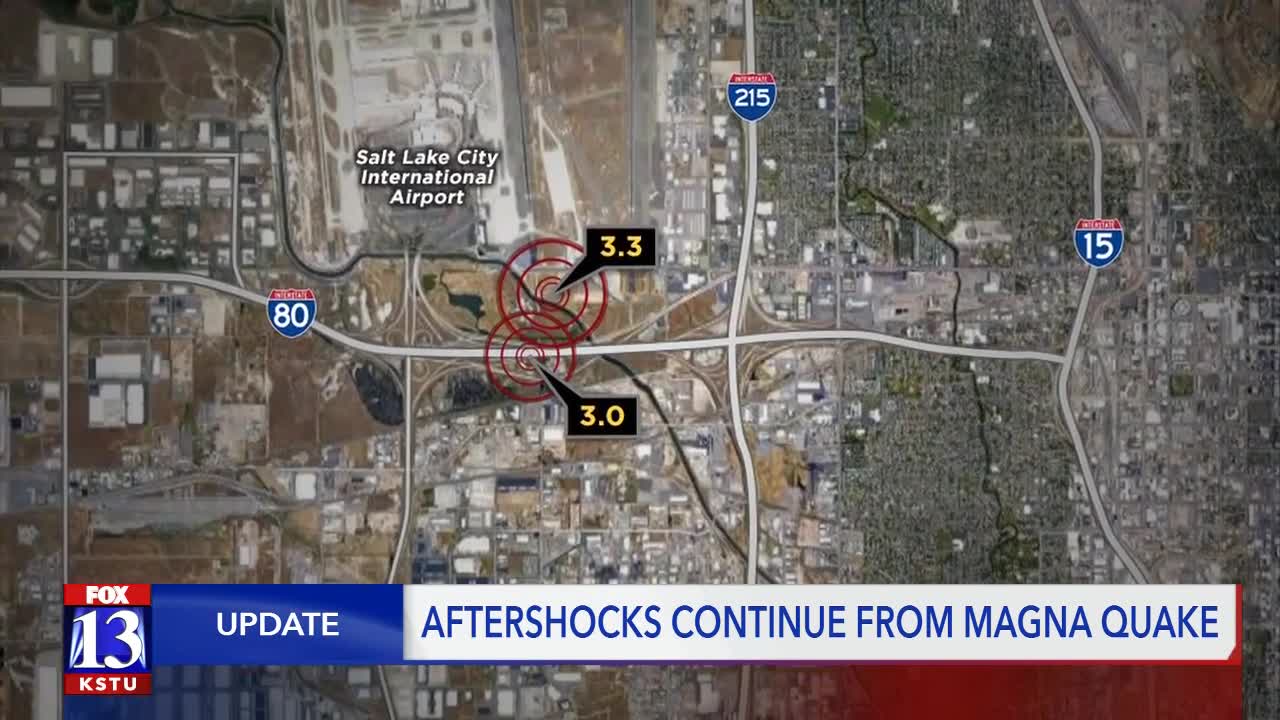SALT LAKE CITY, Utah — A pair of magnitude 3+ aftershocks shook the Salt Lake Valley Thursday morning, adding to the hundreds of aftershocks since March 18.
Thursday’s quakes are centered closer to the Salt Lake International Airport, several miles east of the Magna quakes that included the 5.7 magnitude
The new quakes feel a little different, but are still causing the same anxiety for people in the Salt Lake Valley.
A 3.3 magnitude around 10:15 a.m. was among over 30 aftershocks on Thursday.
“The floor jumped and lifted for a few seconds,” Kat Archuletta said.
In Taylorsville, Archuletta said the aftershocks make it hard to keep calm.
“Instantly, I kind of freeze up and then in kicks the anxiety,” Archuletta said.
There have been more than 560 aftershocks in the last eight days.
“I forget for a moment and then, ‘Here we go again, it’s not over.’ It’s been scary for sure,” Wendy Melendez said from her home in Magna.
Most of the earthquakes are too weak to be felt, but 32 that reached a magnitude 3 or higher.
“It’s definitely very nerve-wracking. It’s making this whole situation that much more scary,” Melendez said.
Thursday’s quakes moved east and closer to the surface, explains University of Utah Seismograph Stations Director Keith Koper, who said it’s common to feel on edge.
“The anxiety is perfectly normal and people who live sort of downtown are feeling these a lot more strongly,” he said.
Heightened anxiety and frequent aftershocks can also cause so-called “phantom quakes,” where one feels shaking without an earthquake. Koper believes it’s all to be expected.
“It’s creepy, it’s unnerving, it’s not fun. But we were really fortunate that nobody got hurt in the 5.7,” Koper said.
Koper expects the aftershocks to continue a few more weeks.
Utahns shouldn’t be alarmed, but he adds the risk is slightly higher for a large earthquake now than before the 5.7.
Koper insists the best way to ease aftershock anxiety is to be prepared by having a plan and a bag with food and medications, just in case.



